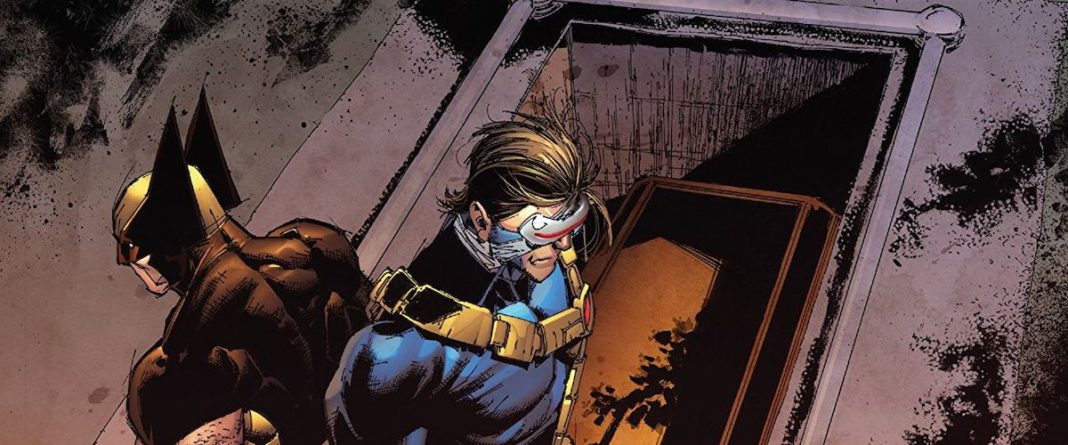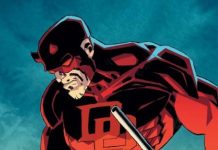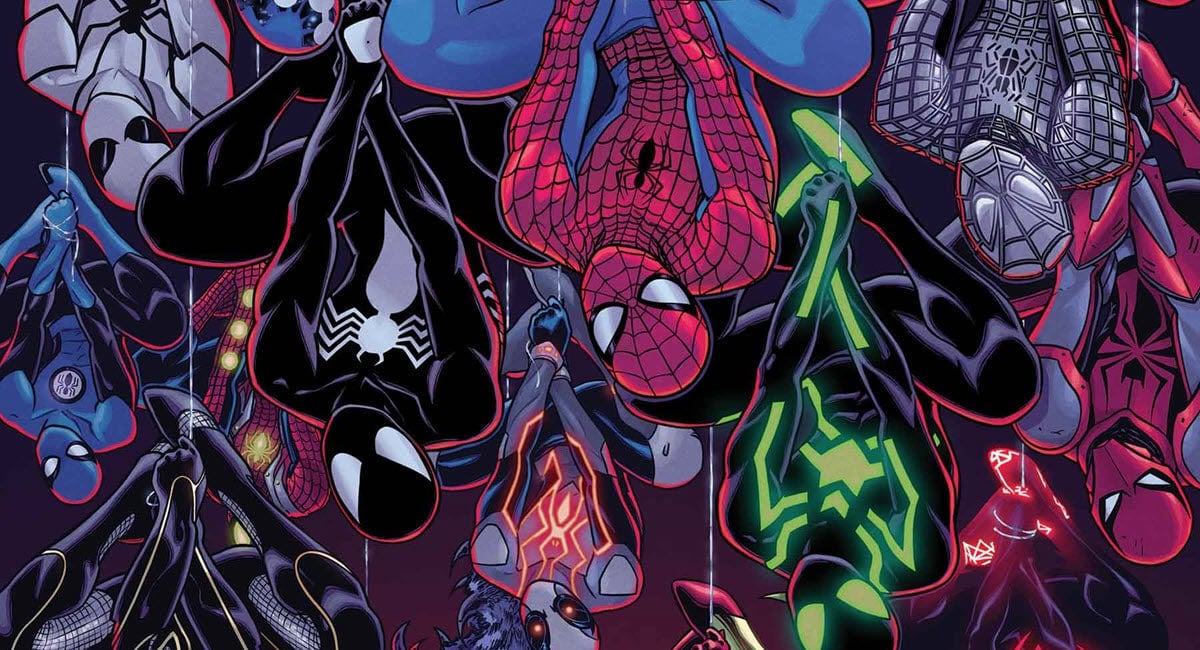By Reed Puc
Uncanny X-Men #16 ended on a cliffhanger that has begun to feel familiar within the pages of Matthew Rosenberg’s run: a woman has died. Today’s body: Rahne Sinclair, codename: Wolfsbane. Original New Mutant, former mutant of Genosha, government agent for X-Factor, investigator for X-Factor, operative for X-Force. Scotswoman. X-man.
Rahne, we’ve seen over and over and over again, knew how to survive. She was trained by Charles Xavier, Magneto, and Logan; she was smart and capable.
And now she’s dead.
Issue #17, which was released May 1, endeavored to show us how. I wish Rahne wasn’t dead, but even moreso, I wish we didn’t have to see how she died.
There’s a lot to say about the mutant metaphor. A great deal of it has already been said. (You can even listen to a live episode of Jay & Miles X-Plain the X-Men about the metaphor, its potential, its limitations.) But I will do my best to be brief and clear here:
There is power in the mutant metaphor. It’s why we’re still reading these comics, nearly 60 years after their creation. There is power in telling stories from the perspective of the outsider.
Mutants, we’re told, could be any one of us. One’s mutation reveals itself at or around puberty. When childhood ends, the weirdness begins. The things that make you unlike your peers reveal themselves to you.
Years of X-comics have drawn parallels between mutants and minority groups – the iconic Days of Future Past shows us a future where mutants are placed into concentration camps; before it was a mutant utopia (briefly – it was bombed to destruction later), Genosha was an apartheid state. That is, in a lot of ways, the beauty of fiction. It can be a tool used to radicalize; used to teach.
But there are limits to fiction. When fiction doesn’t lead to social change. When fiction doesn’t show its metaphorical minority surviving and thriving. When fiction uses a metaphorical minority without ever showing us the real minority it is trying to represent. When fiction seems to think that because its metaphorical minority exists, it can do whatever it likes to the real-life minorities it depicts.
As fan communities grow more visible, one group of X-fans’ reading of the mutant metaphor has grown more culturally known as well.
Queer people, we’re told, could be any one of us. One’s queerness reveals itself at or around puberty. When childhood ends, the weirdness begins. The things that make you unlike your peers reveal themselves to you.
And this is something that – at least since Chris Claremont was writing the series, I’d wager – the X-office has known.
Look at the Legacy Virus. It’s a clear parable for AIDS: it’s a disease that appears suddenly, leaves the X-Men’s scientists scrambling, only effects mutants and moves through blood and DNA.
There’s a reason why Marvel’s first gay characters were X-Men. One of them, actually, was a New Mutant.
I pretty publicly went to bat for Rosenberg’s Uncanny after controversy broke out surrounding the first issue he wrote solo. I’ve enjoyed a good deal of the run, which is exactly why I wasn’t expecting Rosenberg to fail the metaphor so completely today.
Uncanny X-Men #17 opens as the X-Men ready themselves for Rahne’s funeral. Her friends – most of the former New Mutants (Cannonball and Sunspot are absent, doing different things in different books), most importantly, the women of the New Mutants – are shown in their grief.
Rahne has repeatedly been shown to have a subtextual relationship with Dani Moonstar; they are extremely close. Close enough to have a psychic bond that stretches out between them, regardless of how far apart they are. In fact, it’s Dani who tells us Rahne has died, collapsing in pain at the end of issue #16.
Dani’s eulogy is beautiful, yes – but not even in death can Dani express her love in that one, beautiful, simple word: love. Not even as they bury Rahne.
The other New Mutants present include: Ilyana Rasputin, who has had a long and complicated subtextual relationship with another member of the X-Men, Kitty Pryde (in fact, when one version of Ilyana “died,” the physical manifestation of her soul – her soulsword – reverted to Kitty for ownership; Kitty abandoned her wedding after a conversation with Ilyana), and Xi’an Coy Manh, the out lesbian on the team, who calls Rahne her sister.
But that is the B-plot to the issue. The issue’s A-plot follows Logan as he takes the X-Men’s current prisoner, the psychic ninja Kwannon, to find Rahne’s killers. Through Kwannon’s psychic abilities, we see Rahne’s murder in full.
She is murdered because she does not accept advances made by a group of boys. When they continue to harass her, she grows upset and begins to transition into her wolf form.
The boys find themselves disgusted with her and disgusted by their attraction to her.
Rosenberg’s dialogue uses the same terms that men like this use in real life. Rahne is called a trap. She is accused of trying to trick “normal guys.” As if she is deviant. As if she is wrong for existing. As if it is wrong for a straight man to be attracted to her.
Rahne, who has fought bigots, monsters, super villains, Gods, and even her fellow X-Men on occasion, does not fight back. She apologizes.
This a trans panic murder. Explicitly.
And once he has seen this, Logan makes Rahne’s murderers say her name. That’s what he says: “Say her name.” #SayHerName is a response to the murders of Black women by police. These men are not cops; Rahne is not Black. This mixing and matching of culturally-relevant terms makes a needless death feel performative; it turns real violence that Black and/or transgender women face into nothing, into something a Disney-owned book is doing just to say see, we’re #Woke™!
After making them say Rahne’s name, Logan kills her killers, telling them that he is going to show them what he really is.
That’s been the only solace I’ve found with the issue. That Rosenberg seems to be engaging with a sort of backdoor way of acknowledging the popular fan theory that Logan is transmasculine (he’s short, hairy, has a female clone – c’mon, it’s right there, y’all). But –
It’s not worth it. Not only does this tie Logan’s trans masculinity to violence, but as a trans masculine person? I’m furious at the idea that acknowledgment of our existence requires violence done to our sisters.
There is no out transgender X-Man.
There is Darkveil/Shade, a drag queen, but doing drag does not make someone trans. The only thing that makes someone trans is explicit self-identification as a trans person.
I’m furious. I’m furious this comic exists; I’m furious that even after everything that happened with Uncanny #11, it seems that Marvel still can’t even be bothered to put a content warning on the title page.
Our lives – the lives of my sisters and siblings – mean more than a death that ultimately exists to have Cyclops and Wolverine fight about whether killing is right or wrong again. The comfort and literal safety of trans readers matters more: we weren’t warned. There was no lengthy Twitter thread from Matthew Rosenberg this morning explaining that there was going to be upsetting subject matter in the issue, and that it was OK because he had experiences with it.
Because we are the only people who should tell these stories. Marvel, a company that can’t even bring itself to acknowledge trans people on panel except to shame us or kill us in metaphor, doesn’t have the right.
If you are trans and need to talk, call Trans Lifeline for help at (877) 565-8860. Canadian readers can call (877) 330-6366. Trans Lifeline’s peer support hotline is run by and for trans people. They are available 7 a.m.—1 a.m. PST / 9 a.m.—3 a.m. CST / 10 a.m.—4 a.m. EST. Volunteers may be available during off hours.








Comments are closed.